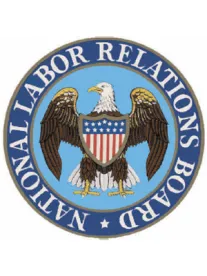The National Labor Relations Board (NLRB) has issued a Final Rule modifying three aspects of its election procedures: its blocking charge policy, the voluntary recognition bar doctrine, and its rule regarding National Labor Relations Act (NLRA) Section 9(a) recognition in the construction industry.
The NLRB issued a Notice of Proposed Rulemaking on August 12, 2019, and received approximately 80 comments from the public. The Final Rule was published April 1, 2020 and will be effective beginning May 30, 2020 (60 days after publication). The final rule contains some minor differences from the proposed rule.
Blocking Charge Policy
A “blocking charge” is an unfair labor practice charge alleging unlawful conduct which, if true, might interfere with employees’ ability to make a free and uncoerced choice of representative.
Currently, the NLRB suspends processing of an NLRB representation petition if a “blocking charge” is filed by the union that filed the representation petition. That means the election or results of the election can be delayed for months or years.
In refining the blocking charge policy, the NLRB noted in its Final Rule that, among other criticisms, “the potential for abuse and manipulation of that policy by incumbent unions seeking to avoid a challenge to their representative status.” The NLRB agreed with comments it received on the proposed rule “that the blocking-charge policy impedes, rather than protects, employee free choice.”
In its place, the NLRB will implement a “vote-and-impound” procedure, whereby petitions will continue to be processed, and elections held on the scheduled date. If the ULP charge is not resolved prior to the election, the ballots would be cast, but impounded until the ULP charge is resolved or withdrawn, or until 60 days pass without a ULP complaint issuing. (In general, a ULP complaint will issue when a determination is made, after the ULP charge is investigated, that there is reasonable cause to believe the ULP charge allegations.)
Voluntary Recognition Bar
The NLRA permits an employer to voluntarily recognize a union that has the support of the majority of the employer’s employees (instead of having been selected by a majority of the employees voting in an NLRB representation election). The NLRB’s “voluntary recognition bar” policy requires employees to wait a “reasonable period of time” (at least six months) after the date of the parties’ first bargaining session and no more than one year after that date before seeking to oust a union that had been voluntarily recognized as their bargaining representative.
Under the NLRB’s Final Rule, employees will have 45 days following an employer’s notice of voluntary recognition of a union in which to file a petition for an election to determine whether a majority of the employees wish to be represented could be filed and processed.
The new rule overrules the NLRB’s decision in Lamons Gasket Co., 357 NLRB 739 (2011), and reinstates its similar test set forth in Dana Corp., 351 NLRB 434 (2007).
The NLRB also decided that the employer and/or the union has to notify the NLRB that recognition has been granted and that the notice has to be posted in conspicuous places and has to be distributed to unit employees electronically if that is how the employer customarily communicates with its employees.
Section 9(a) Recognition in Construction Industry
Under Section 8(f) of the NLRA, an employer primarily engaged in the construction industry may enter into a collective bargaining relationship with a union without receiving proof of employees’ desire to unionize. As a result, that bargaining relationship cannot bar a petition for an NLRB election. Employees or other unions may file an election petition at any time during an 8(f) relationship. Further, either party to an 8(f) contract may terminate the collective bargaining relationship upon contract expiration. By contrast, in Section 9(a) relationships unions enjoy an ongoing presumption of majority support, even following contract expiration.
Under the NLRB Final Rule, and “[i]n the interest of restoring protection of employee free choice in the construction industry,” contract language claiming majority employee support creating (9)(a) recognition alone will no longer be able to convert an 8(f) relationship to a 9(a) relationship. Instead, “positive evidence of majority union employee support” will be required. The Rule overrules Staunton Fuel & Material, 335 NLRB 717 (2001), which held that parties’ contract language may be sufficient to prove and establish a binding 9(a) bargaining relationship.






 />i
/>i
